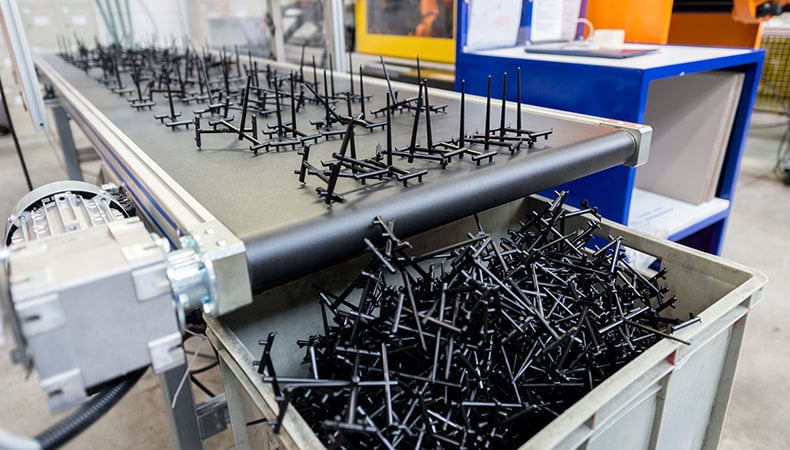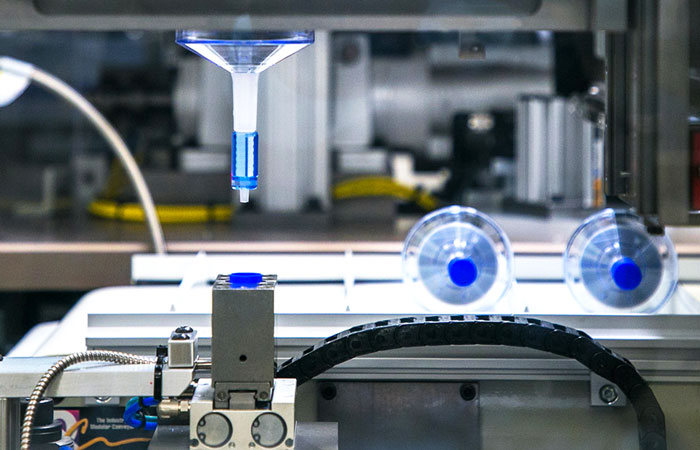How Plastic Injection Molding Drives Effectiveness in Mass Production
How Plastic Injection Molding Drives Effectiveness in Mass Production
Blog Article
Understanding the Basics of Plastic Injection Molding Procedures
Plastic injection molding serves as a foundation of contemporary manufacturing, offering a methodical method to producing complex components with precision. Exploring these essential aspects might expose how even minor changes can lead to substantial enhancements in production outcomes, elevating questions about the potential for development in this recognized process.
What Is Plastic Injection Molding?
Plastic injection molding is an extensively used production procedure that changes polycarbonate and thermosetting materials right into exact and complex forms. This technique is favored for its capacity to create high quantities of similar components with extraordinary precision, making it a vital method in numerous industries, including auto, durable goods, and clinical tools.
The process includes thawing the chosen plastic material and infusing it right into a mold under high pressure. The mold and mildew, designed to the specifications of the preferred component, allows the molten plastic to materialize as it cools down and solidifies. As soon as the product has hardened, the mold is opened up, and the ended up component is ejected.
Plastic shot molding offers a number of benefits, consisting of reduced waste, consistency in production, and the ability to incorporate complex layouts that might be testing with other manufacturing methods. Furthermore, it sustains a wide series of products, each giving one-of-a-kind residential properties that can be customized for specific applications. As industries continue to innovate, plastic injection molding remains at the forefront, enabling the development of advanced products that fulfill evolving customer needs.
The Injection Molding Process
The injection molding procedure is an innovative strategy that entails numerous vital phases to create top notch plastic parts. Originally, plastic pellets are fed right into a heated barrel where they are melted into a thick fluid. This molten plastic is then injected under high stress right into a precision-engineered mold, which shapes the product right into the preferred form.
As soon as the mold and mildew is filled up, the plastic is allowed to cool and strengthen, taking the form of the mold cavity. Air conditioning time is critical, as it influences the cycle time and the final homes of the molded component. After adequate air conditioning, the mold and mildew opens, and the ended up element is ejected making use of ejector pins.

Products Used in Injection Molding
Various materials can be utilized in the injection molding process, each offering unique residential properties that satisfy details applications. One of the most commonly made use of products consist of thermoplastics, thermosetting plastics, and elastomers.

Thermosetting plastics, like epoxy and phenolic materials, go through a chemical adjustment during the curing procedure, resulting in a stiff, inflexible structure. These products are perfect for applications calling for high heat resistance and architectural integrity, commonly used in auto parts and electrical insulators.
Elastomers, consisting of silicone and rubber-based products, offer adaptability and resilience. Their distinct buildings make them suitable for applications that demand flexibility, such as gaskets and seals.
Additionally, specialty materials like bio-based plastics and composites are getting grip for their environmental benefits and improved efficiency features, broadening the scope of injection molding applications in different sectors. Understanding the residential properties of these products is crucial for selecting the suitable type for certain tasks.
Benefits of Shot Molding
Shot molding attracts attention as an extremely reliable production procedure that supplies countless benefits for generating intricate components with accuracy. Among one of the most considerable advantages is the capability to produce complex designs that would be challenging or difficult to attain with various other techniques (Plastic Injection Molding). The process enables in-depth functions and tight resistances, making certain high-grade parts
Furthermore, injection molding is recognized for its quick manufacturing abilities, making it a perfect choice for high-volume production. When the mold is developed, components can be created rapidly, minimizing lead times and increasing total efficiency. This efficiency not just reduces production prices but additionally supplies a competitive side out there.
The flexibility of materials utilized in blog here injection molding additionally enhances its allure. A large range of thermoplastics and thermosetting polymers can be utilized, permitting makers to select products that best satisfy their specific demands, including flexibility, toughness, and warmth resistance.
Furthermore, the procedure minimizes waste, as excess material can usually be recycled and reused. This sustainability element adds to a decreased ecological influence, making injection molding an accountable production selection. Overall, the advantages of shot molding make it a recommended approach for many markets.
Variables Influencing Product High Quality
While many variables can affect item quality in shot molding, understanding these elements is essential for achieving ideal results. Key facets consist of product choice, refining specifications, and mold and mildew layout.
Product choice plays an important duty, as various polymers display special residential properties that impact flowability, strength, and thermal stability. Poor product selection can lead click this site to defects such as bending or incomplete filling.
Processing specifications, consisting of temperature, cycle, and stress time, need to be diligently controlled. Variants in these settings can lead to inconsistencies partially measurements and surface coating. For example, excessively high temperatures might create destruction of the polymer, while insufficient stress can cause short shots.
Mold style is equally vital, as it figures out the circulation of the molten plastic and the cooling procedure. Inadequately designed molds might cause unequal air conditioning prices, resulting in dimensional inaccuracies and recurring tensions.

Conclusion
Finally, plastic injection molding works as a vital production procedure that allows the effective manufacturing of top notch parts. Proficiency of the shot molding process, including the understanding of materials and the influence of various elements on product quality, is essential for achieving optimal outcomes. The benefits advice of this technique, such as cost-effectiveness and style versatility, additional emphasize its importance throughout several markets, solidifying its status as a recommended selection for high-volume production.
Plastic injection molding offers as a keystone of contemporary manufacturing, giving a systematic method to producing intricate parts with precision.Plastic shot molding uses a number of advantages, consisting of decreased waste, consistency in manufacturing, and the capability to incorporate complex styles that might be testing with other making techniques (Plastic Injection Molding). As markets continue to introduce, plastic injection molding continues to be at the leading edge, enabling the advancement of advanced products that meet evolving customer demands
The shot molding procedure is an advanced technique that includes several crucial stages to create top quality plastic parts.In conclusion, plastic shot molding serves as an important manufacturing process that makes it possible for the effective manufacturing of top quality parts.
Report this page